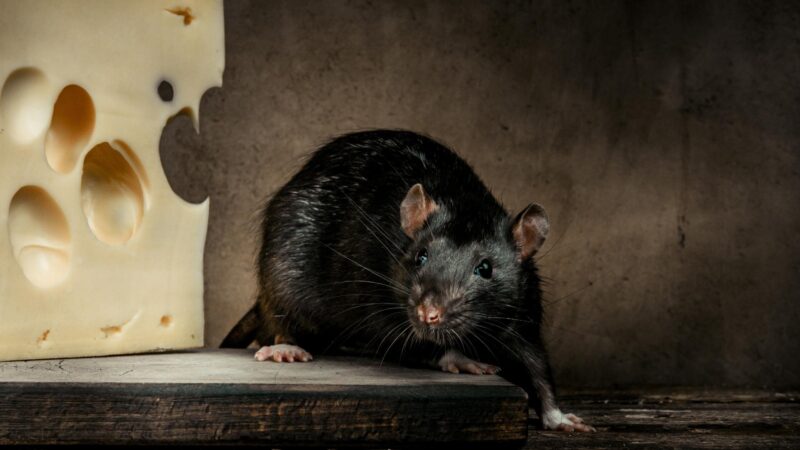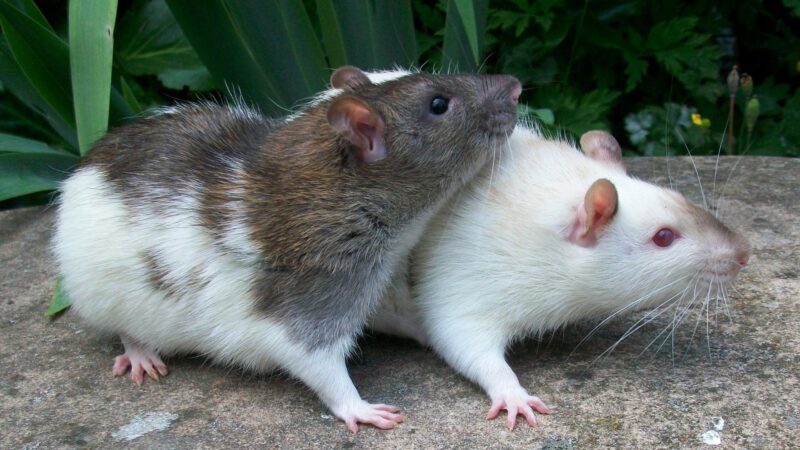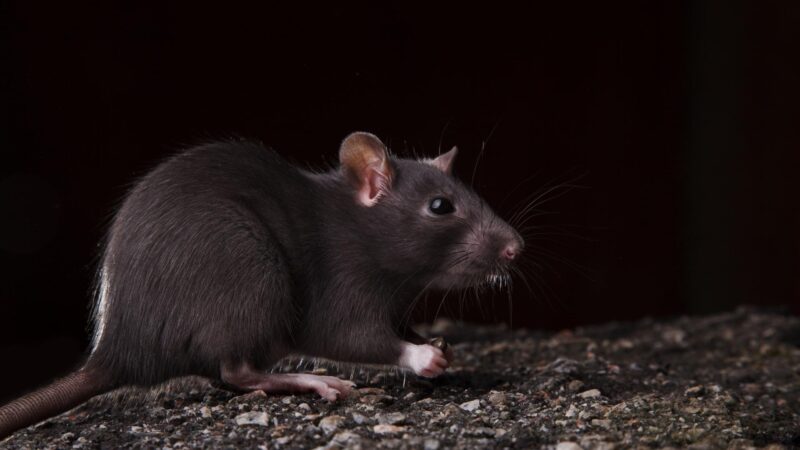Small and full of trouble, rats are one of the most damaging rodents as they contaminate food supplies, damage structures of homes and buildings, and transmit diseases.
What’s worse is that they’re smart creatures equipped with problem-solving skills. They’re rather difficult to catch and extra cautious of their environments.
If you want to know about how smart rats are, understand their behaviors, what items they like and hate the most, the best ways of getting rid of them, and how to dispose of them once they’re caught dead, read more of this article!
Are Rats Smart Enough to Avoid Traps?

Rats are smart enough to avoid traps. They’re often wary of new objects in the environment, including food items. Also, they like to inspect them first before completely avoiding them. This is why they can successfully avoid traps and baits.
Related: Why Rats Aren’t Eating Your Bait? | A Complete Guide
How Smart Are Rats?
Rats can run through mazes and be trained to open puzzle boxes as a psychologist did in the 1900s. They’re often used in laboratory experiments because of their natural intelligence, and their brain structure resembles primitive elements of the human brain.
Additionally, they have excellent memory-retaining abilities and are proficient in learning and understanding new concepts. They can be taught to do tricks once domesticated and are known to clean themselves just as much as cats do.
What Types of Rats Are Smart?
Generally, all rats display intelligence. Domesticated rats and laboratory rats, however, will seem smarter since they’re being trained to do various tasks and tricks.
Are Rats More Intelligent Than Mice?

Rats and mice have roughly the same level of intelligence, but rats have faster learning abilities and can do a wider range of tasks than mice, according to scientists. However, it’s worth noting that research will have contradicting opinions on this question.
How Do You Lure a Rat Out of Hiding?
- Spray scents they don’t like on surfaces that have places they can hide or in isolated areas of the building such as walls, basements, and lofts. They typically don’t like the smell of capsaicin which is found in pepper, garlic, onion, cloves, and alcohol.
- Adopt a cat or use cat litter in luring them out. Even without the presence of cats and their rat-hunting abilities, the scent of their litter is enough to drive rats out of their habitats and send them scurrying—making them more visible to you.
- Use baits such as cheese, pieces of meat, and peanut butter. However, this may not always be effective as they can be cautious of their surroundings.
- Take away any possible food sources or nesting materials. As soon as they realize they’re running out of supplies, they’ll come out of hiding.
Understanding Rat Behavior

Rats are nocturnal animals who like to dig burrows, build nests by collecting materials such as garbage, leaves, sticks, and twigs, and forage for food starting at dusk and can last late into the night.
They usually take a long time to look for food through well-learned routes. In fact, they’re excellent at navigating through complex networks of skewers and underground burrow systems.
Occurring in large-numbered packs, rats are effective at hiding themselves and scurrying when they detect human presence. They often go unnoticed for long periods of time.
Grooming is an essential aspect of rat behavior as adult rats meticulously groom themselves and even pass on grooming techniques to their young. When they have body parts that go bad, they gnaw at the diseased tissues.
When communicating, they produce squeaks when socializing or when they feel threatened. They’re generally vocal animals, but they also use visual cues and body gestures.
Best Baits You Can Use to Trap Rats
Peanut butter is the most effective bait to use in rat traps and is considered a staple. Rats are attracted to its smell, and peanut butter jars have long shelf lives, making them a great and long-term choice. Make sure not to use them at school or near people who are allergic!
Roof rats prefer nuts and sweet fruits while brown rats like fish, particularly sardines, and pieces of meat, such as hotdog, bacon, or sausage, so it’s recommended to use them too.
Other bait choices you can use are cheese, oatmeal, plant seeds, cereal, slugs or snails, and chocolate.
What Food Is Irresistible to Rats?

It depends on the species. For instance, black rats usually forage for fruits, grain, insects, and other kinds of vegetation, while brown rats eat virtually anything but mainly eat human food wastes if they live in metropolitan areas and fish if they live near the sea.
What Do Rats Hate the Most?
Rats hate natural scents such as eucalyptus, peppermint oil, citronella, and pepper. Other natural smells they are averted to are wintergreen oil, bergamot oil, and geranium oil.
They are also repelled by chemical smells such as bleach, ammonia, and mothballs. Although the use of mothballs should be minimized, they can be potentially toxic to humans.
They also show an aversion to the smells of cats and ferrets since they are their natural predators, according to a 2004 study.
What Is the Best Way to Get Rid of Rats?
- Snap traps. These inexpensive wooden contraptions are classic rat control devices that come in small and large sizes for mice and rats, respectively. You can even purchase these at your local supermarkets.
Wait for two days and let them get used to their presence before putting in baits such as peanut butter. Place several snap traps parallel to the direction of where they’re inhabiting.
- Electrocution traps. Shoebox-shaped devices work similarly to snap traps in that you would need bait to lure the rats out. They’re often easy to use and are battery-operated.
Teal Elite Rat Zapper is a good product that has a kill chamber that lets you dispose of dead rats without having to touch and clean the insides of the device.
- Live traps. Similar to electrocution traps, due to their shoebox shapes but don’t use any electricity. This is the best choice for home and building owners who don’t want to kill rats after capturing them but prefer letting them go.
Made with premium mesh that’s sturdy and durable against the gnawing of rats, Kensizer Humane Rat Trap is an ideal product.
- Rat poison. There are several commercially-produced rat poisons you can choose from. However, you have to keep in mind that they may be potentially toxic to humans, so keep children out of reach of these products.
You can get the Tomcat All Weather Bait Chunx , a two-in-one bait and rat poison trap that has Diphacinone and enhanced food ingredients that rats can’t resist. It’s also resistant to mold and moisture.
- Bait stations. Recommended by a wildlife specialist, bait stations are useful devices that may come with bait boxes to lure rats and are safe against children and other pets in your household.
Redtop Rat Bait Station 2 Pack provides an easy-to-install bait station with a secure locking system to make sure kids and pets don’t tamper with the product. The enclosure is wide enough for rats to escape once they’re poisoned, so you won’t have to see them in the process of dying.
- DIY rat spray. You can use ingredients that rats hate, such as peppermint oil, eucalyptus, and citronella (you can choose just one!), and mix with a cup of water and a few drops of dishwashing liquid to create a rat repellent spray. Apply the mixture in places where you think rats are located and monitor the results.
- Pest control professionals. If the above methods didn’t work out for you and rats are still a persistent problem in your household or building, then you’d better contact pest control agencies who would do the job efficiently and effectively.
Related: Rat Control: How To Get Rid of Rats?
What Kills a Rat Instantly?
Snap traps and electric traps are designed to kill rats instantly since they have mechanisms triggered when a rat lands on the trap, either by literally snapping the rat or by lethal electrocution.
How to Dispose Dead Rats?
Use gloves to pick up the dead rat. Wrap it in a newspaper or a plastic bag and then throw it away in a garbage bin. Make sure to close the bin tightly.
Rats that are injured or showing symptoms of sickness must be killed before wrapping and disposing it in the garbage bin.
Do Rat Traps Actually Work?
Rat traps do actually work, but it will take some time and a lot of patience before they fall for them and entrap themselves since they’re smart creatures and can be difficult to outsmart.
Summary
Rats are smart enough to avoid getting caught in traps which is why it’s important to set up traps before luring them out first and then wait for them to get caught and/or killed. If all else fails, it’s best to contact pest control to effectively remove them from your house or buildings.
List of Sources
Jansen, J. (2014). In a battle of brains, bigger isn’t always better. Cold Spring Harbor Laboratory.
Kalandakanond-Thongsong, S., Daendee, S., Thongsong, B., Chavananikul, V. (2010). The Efficacy of Pure Natural Repellents on Rat Responses Using Circular Open Field. Faculty of Veterinary Medicine – Chulalongkorn University.
McGregor, I. S., Hargreaves, G. A., Apfelbach, R., Hunt, G. E. (2004). Neural Correlates of Cat Odor-Induced Anxiety in Rats: Region-Specific Effects of the Benzodiazepine Midazolam. Journal of Neuroscience.
Pierce, R. A. (2022). Bait Stations for Controlling Rats and Mice. University of Missouri Extension.
How to use rodent traps and bait stations. (2013). King County.
- How to Get Rid of Turtles | Proven Long-Term Solutions! - August 26, 2023
- How to Get Rid of Kingsnakes | Easy & Humane! - August 26, 2023
- How to Get Rid of Northern Water Snakes | Best Solutions and Preventative Measures! - August 19, 2023
